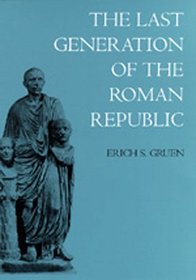Restaurant: La Pergola
Location: Via Alberto Cadlolo, 101, Roma
Date: June 9, 2015
Cuisine: Italian
Rating: Carts, carts, and more carts!
And on to our first “fancy” dinner, Rome’s sole 3 star Michelin Restaurant, La Pergola. Even our six year old got to enjoy this one, earning himself more than 8 Michelin stars during the trip.

La Pergola is located high above the city in the Cavalieri hotel. This is a very elegant property but with a uniquely Italian blend of 60s, modern, and antique elements.

The view is spectacular. St Peter’s can be seen in the background.

The lovely main dining hall.
 What would a 3 star be without various carts and trays. In this case the pepper tray, in case you really have a preference as to pepper.
What would a 3 star be without various carts and trays. In this case the pepper tray, in case you really have a preference as to pepper.

Or the fancy salts tray (or trays).

And this giant block of crystallized salt.

Or balsamic. I think there was an olive oil one too.

Or sugars.

We chose some bubbly from the champagne bucket.

Then the bread carver set to work on the extensive basket.

A first flight of breads.

Tonight’s menu.

An amuse of smoked duck. Lovely smoky flavor.

Tuna Carpaccio with wasabi cream, cumin seed gelatine, and red beets. The rectangular slab was the tuna. The pink things had a light, almost Meringue-like texture.


2011 Villa Diamante Fiano di Avellino Vigna della Congregazione. The waiter recommended this lovely Southern Italian White, and it turns out I actually have 4 bottles of this exact wine in my cellar!

Frisella with croutons and red shrimps. Basically a dehydrated panzanella salad. The “bread” was probably freeze dried and had a light airy texture. The raw shrimps were lovely too.

I belive artichoke hearts.

S-campo. A bit of fresh shrimp with dehydrated ingredients, including seaweed.

Then rehydrated with consommé. It wasn’t so much of a looker afterward, but tasted good.

Fagottelli “La Pergola.” These amazing little tortellini were filled with liquid parmesan and exploded in the mouth. Plus there was some pancetta! Amazing.

White asparagus, topinambur puree, balsamic vinegar and strawberries.

Cod with chili pepper sauce and marinated anchovies. This salty sauce reminded me of certain Chinese sweet and sour fish sauces, but it was saltier. Rather delicious and the fish was perfectly moist.

1982 Poderi Aldo Conterno Barolo Vigna Cicala. 93 points. Light red, fading into the browns. Lots of caramel and cedar, but still very nice fruit, tons of tannin, and drinking well. Probably a bit past its prime, but still a very nice wine.

Braised veal cheek with curly endive, burrata and spiced popped rice. A super tender chunk of meat.

Seabass and peppers.

The cheese cart. I do love a proper cheese cart.

Cheese. I went for the smelly strong ones.

And bread for the cheese, including an almost panforte like slab of fruit and nuts.

Candles.

And the special napkin plate.


Next up is the ultimate little dessert tower. Twelve little confections, each with one per person. They were amazing.

Iced sphere of red fruit on tea cream with crystalized raspberries.

The sphere was like a sphere of sorbet. This was basically like a chocolate and berries desert, with interesting texture and temperature. Rather delicious. The potency of berry flavor came from the raspberries.

Alex had his own “tasting menu” of penne pomodoro, a “parmesan” course (I forgot to photo).

And chocolate gelato (with accompaniments).

Then there were more bon bons, little delicate home made chocolates.
Certainly an amazing meal. A tad on the long side with a six year-old, as we started when they opened and finished at midnight when everyone else did. In fact, it seemed that no matter when you started, they rapidly had you on basically the same schedule. But everything was humming at 3 star level. The setting was fabulous, the service impeccable, the food inventive and delicious. Every dish worked, although perhaps not every dish was amazing. Some were, like the cheese filled pasta. Great stuff!


















































































































































































